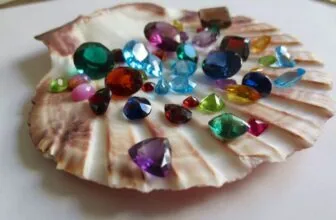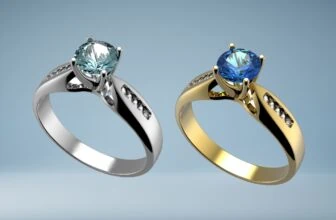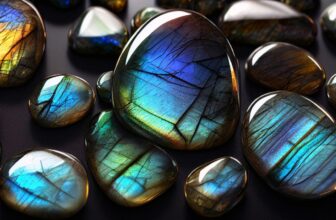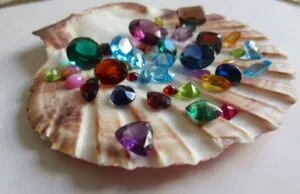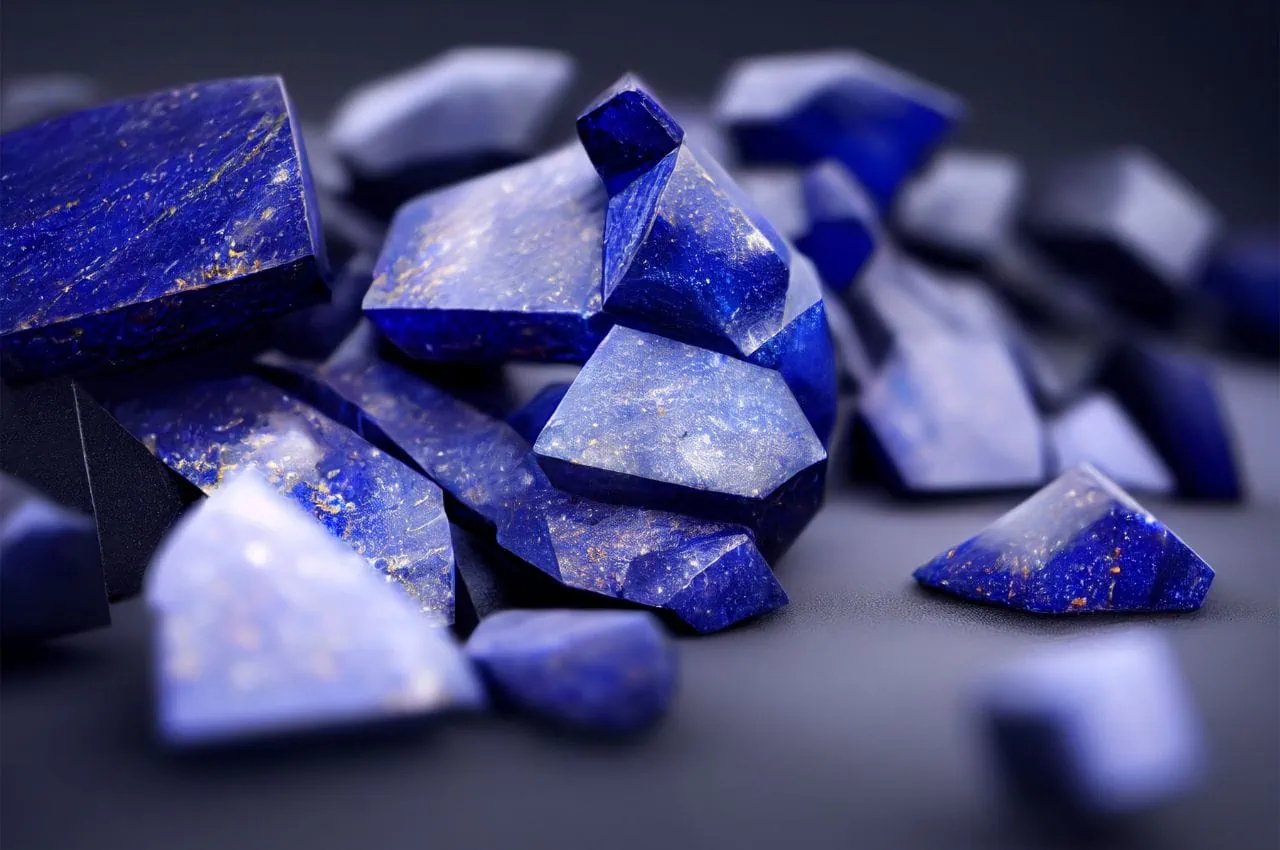
Table of Contents
With its deep blue color and many believed spiritual powers, lapis lazuli has been an incredibly sought-after stone for thousands of years.
Derived from the Latin word for stone and the Persian word for blue, lapis lazuli is just that: a blue stone. Often referred to as simply lapis, this stone has had many uses over the centuries and is currently widely available in forms such as earrings, necklaces, rings, and even small sculptures.
When shopping for a piece of lapis lazuli, there are several things to take into consideration to ensure you get the best quality piece within your budget. Let’s take a closer look.
What is Lapis Lazuli?
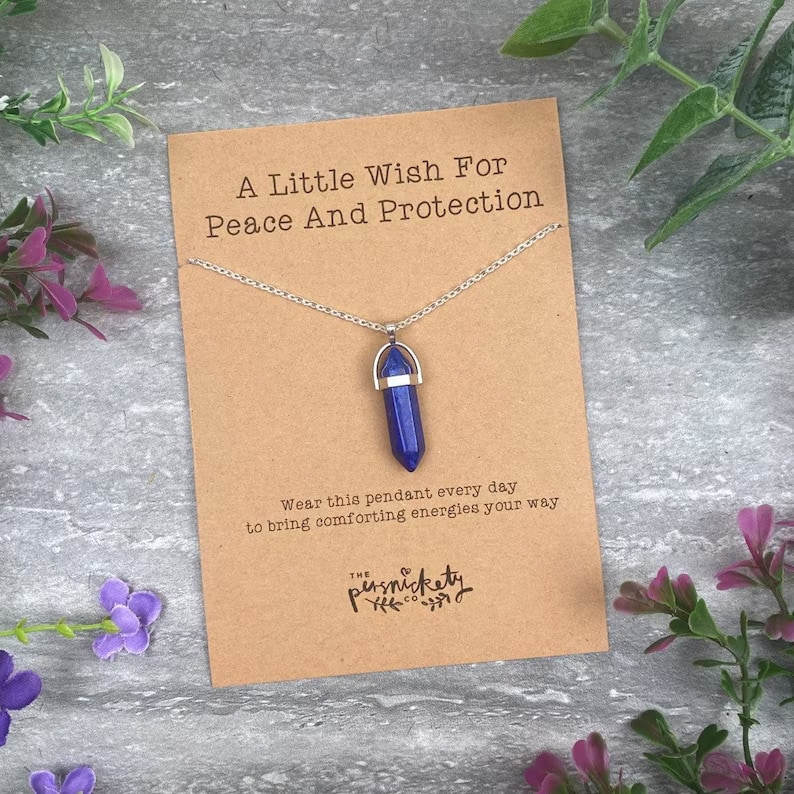
Lapis lazuli, a mesmerizing gem, boasts a heritage rooted in the craggy landscapes of Afghanistan and the Middle East. This semi-precious stone is a composite of various minerals, making it an enigmatic and multi-dimensional gem. Its deep, enchanting blue hue is attributed to lazurite, the primary mineral in its composition.
This striking color is often interspersed with veins of white calcite, which sometimes manifest as thin streaks across the stone’s surface. Another intriguing constituent of lapis is pyrite, lending the stone its characteristic glittery specks of gold or silver.
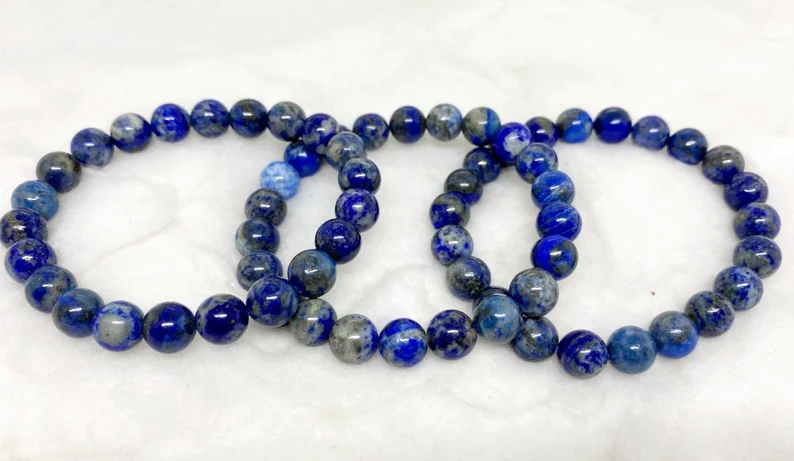
Afghanistan’s mountainous terrain is a treasure trove of lapis lazuli due to the region’s rich mineral content, making it an ideal mining hub for this gem. While Afghanistan holds the reputation of producing the finest lapis, the stone can also be found in Pakistan, Russia, Chile, and, more recently, certain parts of North America like Colorado, California, and Canada.
A spectrum of colors defines lapis lazuli, ranging from deep blues to shades of green and violet. The most sought-after variant is a dark blue shade, ideally with minimal visible inclusions of calcite and pyrite. Contrary to what one might think, these inclusions don’t always diminish the stone’s value. In fact, the delicate streaks of white calcite or the glittering flecks of pyrite are often coveted, adding a unique charm to the gem.
Lapis Lazuli Jewelry
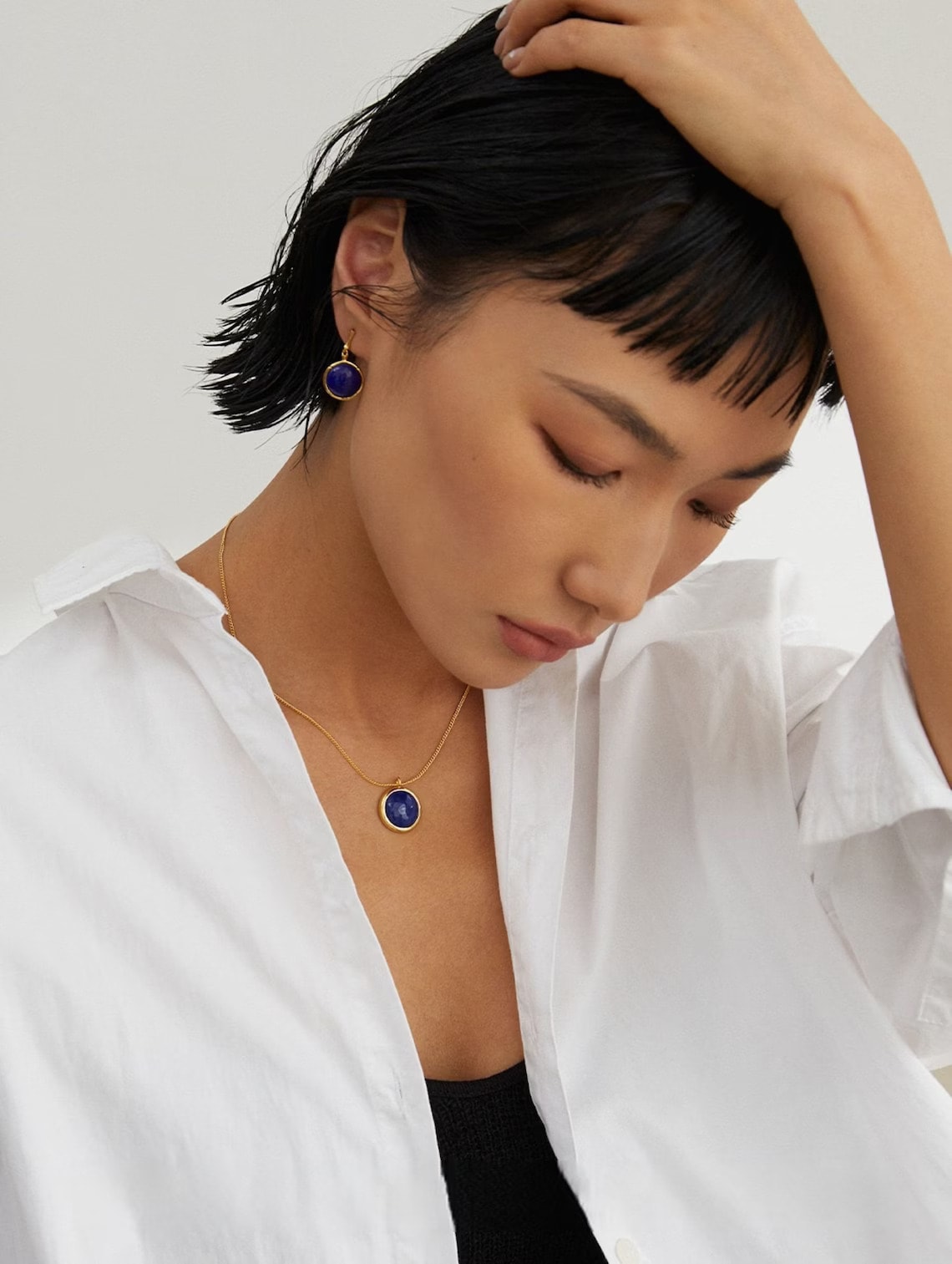
Lapis lazuli is found in various types of jewelry as well as other accessories.
1. Necklaces & Pendants
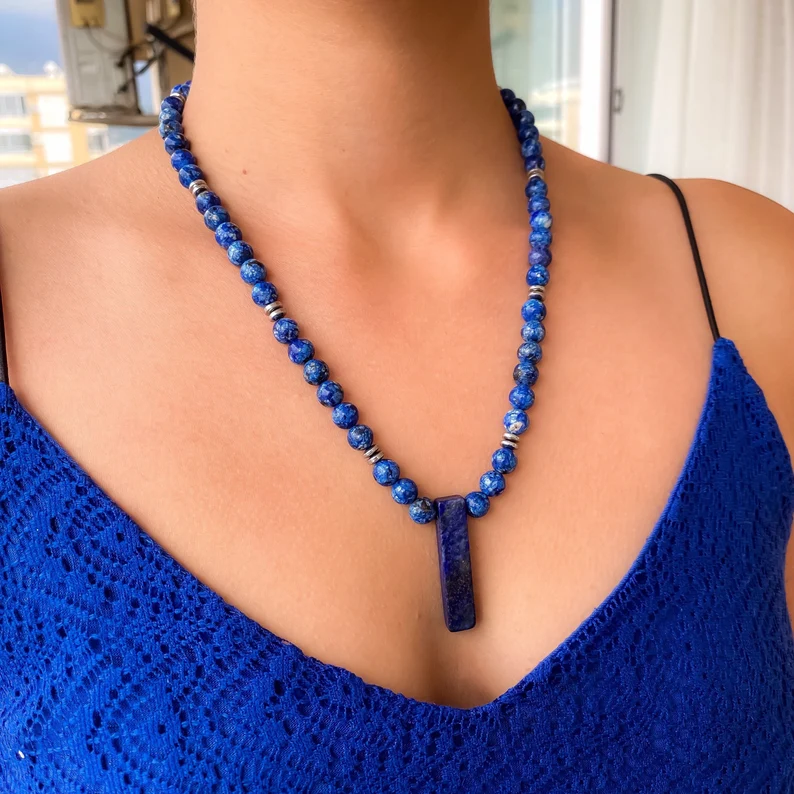
Lapis lazuli finds its exquisite presence in various necklace forms. Close-fitting chokers can spotlight a central lapis stone or shimmer with a sequence of smaller beads. Those preferring a more elongated style can opt for opera length necklaces. These beautifully incorporate lapis lazuli beads, often juxtaposed with gold or silver highlights.
For a more defined and solo showcase, pendants come into play. They can bear a singular lapis lazuli, polished or in its raw beauty, and can swing from minimalist to ornate designs complemented with diamonds or other gemstones.
2. Earrings
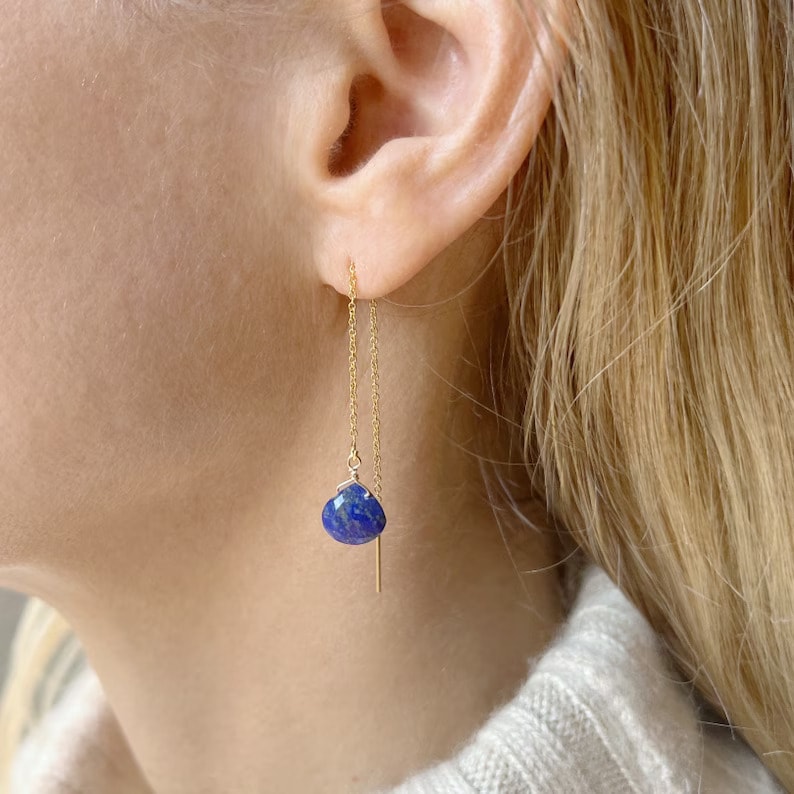
The deep blue tones of lapis lazuli effortlessly enhance ear jewelry. Stud earrings are understated, making them ideal for daily wear, most commonly presenting a singular gem. For those seeking a hint of drama, dangle & drop earrings are perfect.
Hanging gracefully below the earlobes, they often marry lapis with other gems or metals. Lastly, the timeless hoop earrings, either circular or semi-circular, often feature lapis lazuli beads or elegant inlays.
3. Bracelets
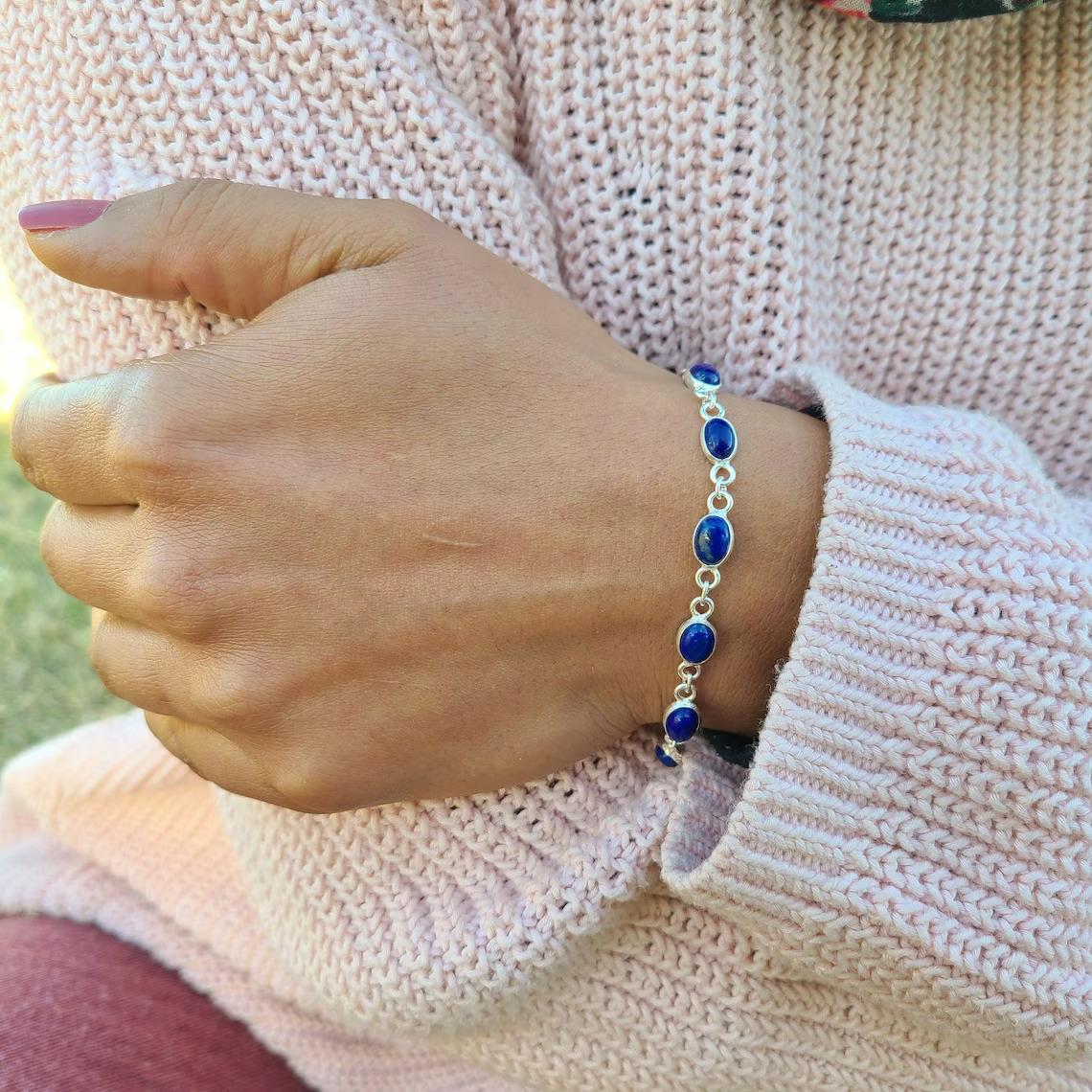
Bracelets, too, don’t escape the charm of lapis lazuli. Beaded bracelets thread multiple lapis beads, sometimes mingling with other stones or metallic beads. Cuff bracelets, being open-ended, might either be inlaid with lapis or flaunt a central, prominent stone.
Those who adore a playful touch can opt for charm bracelets, where chains peppered with various charms might include delightful lapis lazuli pieces.
4. Rings
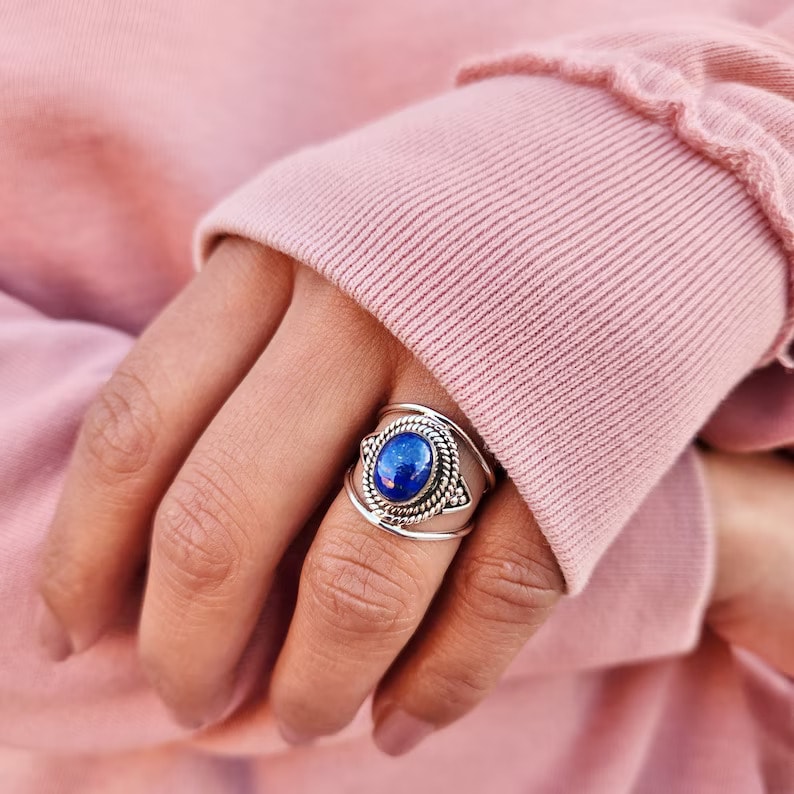
In the world of rings, lapis lazuli makes a strong statement. Solitaire rings stand out with a single, often grand, lapis stone. In contrast, band rings rely on the continuous harmony of lapis inlays or interspersed gems. For enthusiasts of layering, stackable rings offer a more varied showcase of this royal blue stone.
5. Brooches & Pins

Fashioned from metals like gold or silver, these garment accessories frequently champion lapis lazuli as their star or subtly integrate it as an accent among other gems.
6. Other Accessories
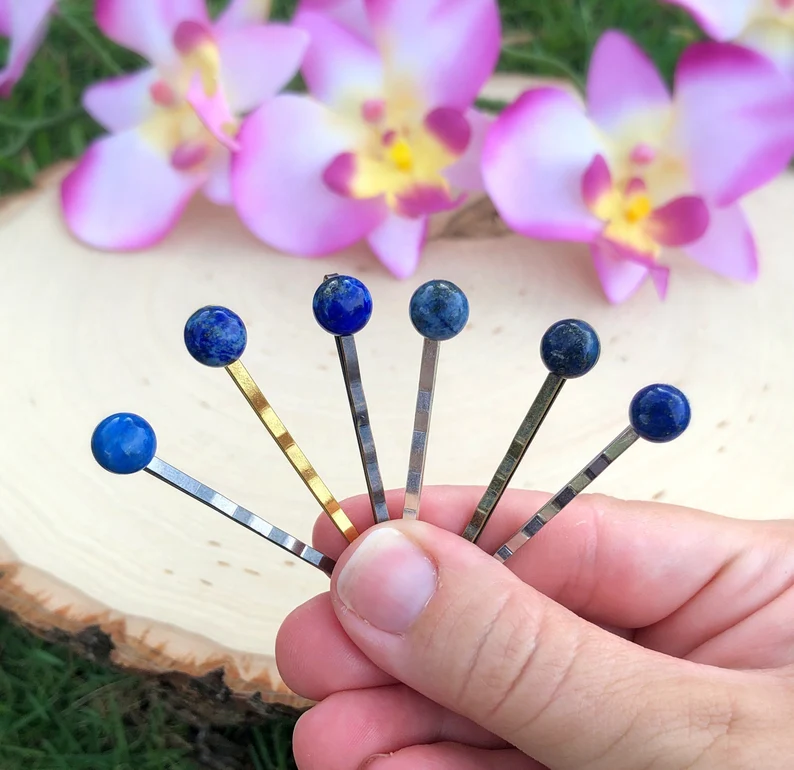
Lapis lazuli isn’t just restricted to traditional jewelry. Its captivating blue hue and shimmering specks make lapis lazuli cufflinks a sought-after accessory, instantly elevating the sophistication of formal wear.
On the other hand, hair accessories like hairpins and hairbands are seeing a resurgence in the fashion world. Incorporating lapis lazuli, whether through intricate beads or larger statement stones, these accessories add a touch of elegance to hairstyles, making them perfect for both everyday wear and special occasions.
Is Lapis Lazuli a Good Choice for Engagement Rings?
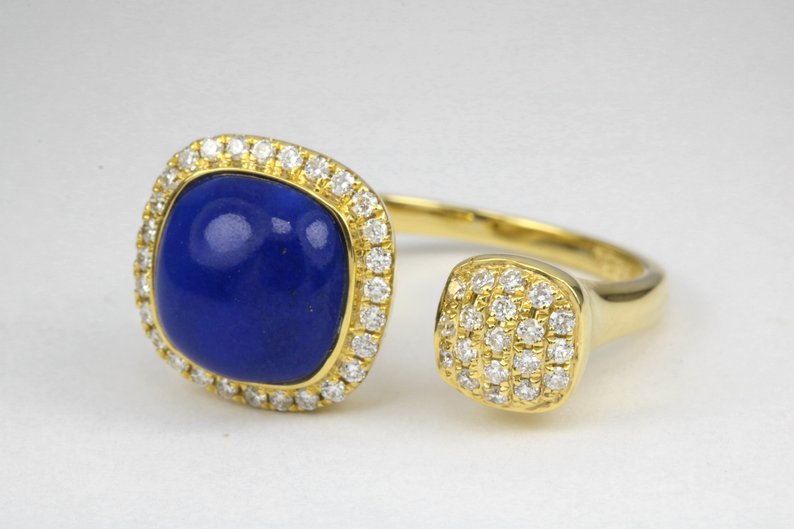
Lapis Lazuli is a beautiful blue gemstone with specks of golden pyrite that can create a stunning visual effect. While it possesses a unique and captivating appearance, there are a few factors to consider before choosing it as an engagement ring stone.
Lapis Lazuli is generally not as durable as some traditional engagement ring gemstones like diamonds, sapphires, or even moissanites. It’s relatively softer and can be susceptible to scratches and chipping over time if not handled with care. Since an engagement ring is meant to be worn every day for a lifetime, durability is a crucial consideration.
If you and your partner value the aesthetic appeal of Lapis Lazuli and are willing to take extra precautions to ensure its longevity, it could still be an option. However, if you’re looking for a gemstone that combines both beauty and durability, you might want to explore other options.
Is There Imitation Lapis Lazuli?
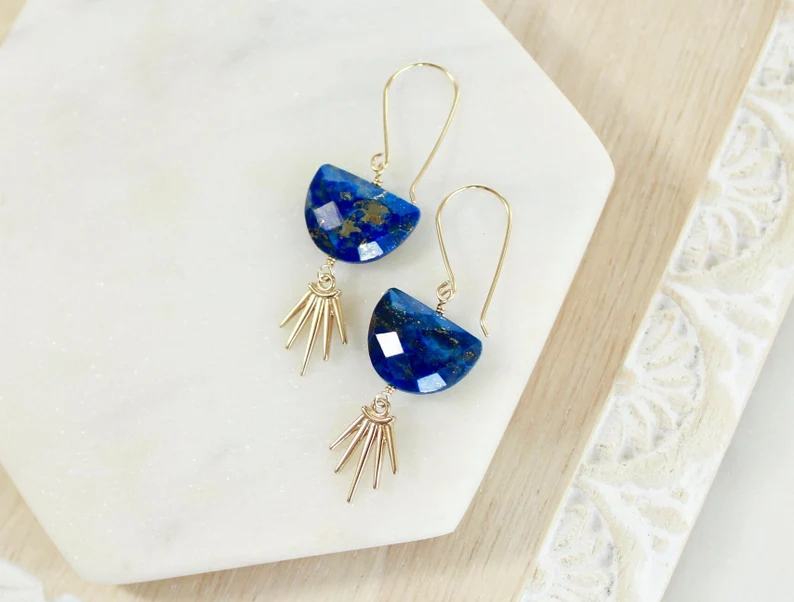
Colored glass and plastics are commonly used to imitate lapis. These materials can be changed to mimic the appearance of the traditional dark blue speckled surface of authentic lapis.
If you’re unsure if your lapis jewelry is authentic, a gemologist or high-end jeweler will give you an honest opinion. This isn’t always a feasible option, especially if lapis jewelry is not very valuable.
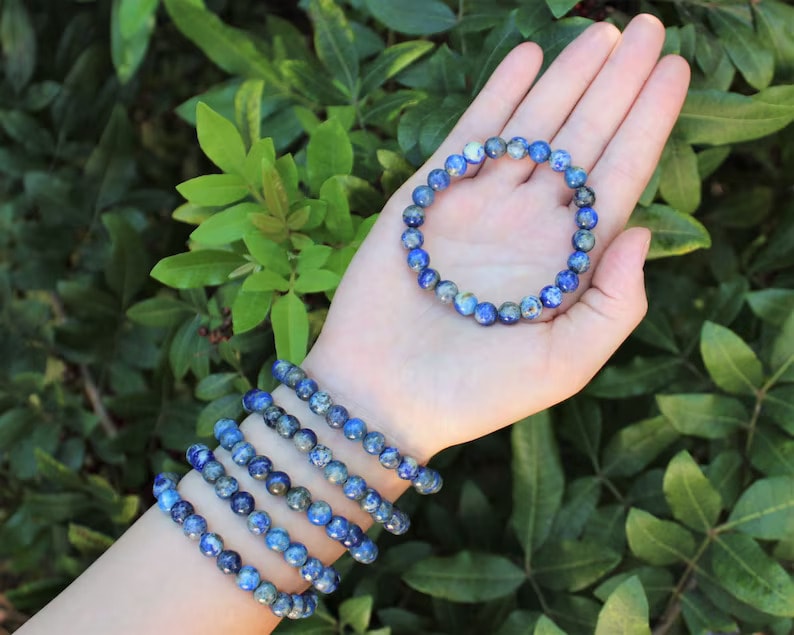
This is why it’s important to purchase from a reputable retailer with a proven track record. This way, you know that what you get is what it purports to be.
Always shop around before making a final decision. Doing your research is absolutely necessary when purchasing a piece of lapis.
Is Lapis Lazuli Treated or Enhanced?
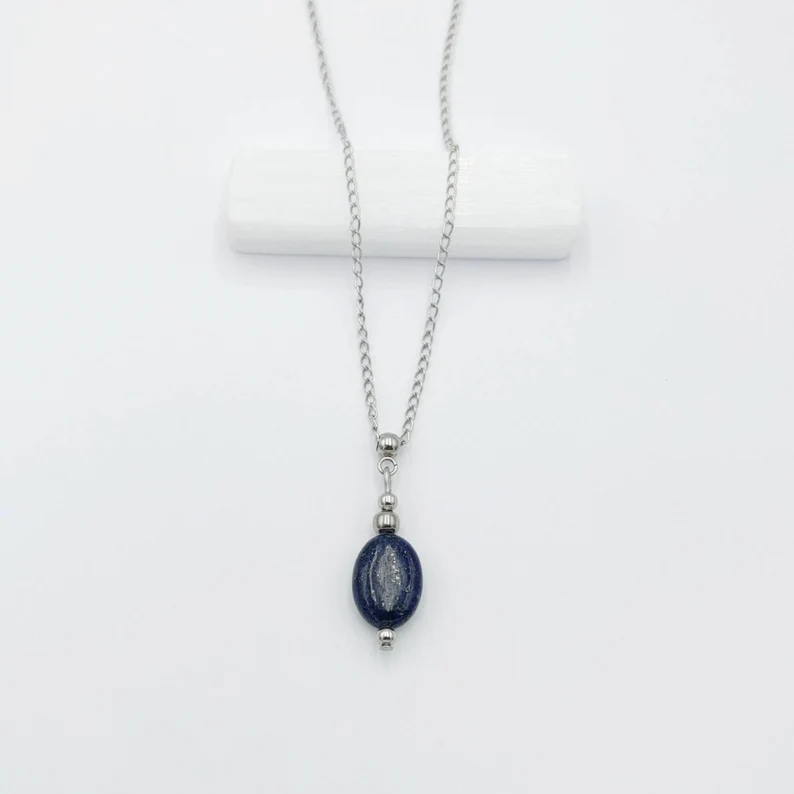
Lapis Lazuli is generally not treated or enhanced in the same way that some other gemstones are. It’s a naturally occurring mineral composed mainly of lazurite, with specks of other minerals like pyrite and calcite that give it its characteristic appearance. The blue color of Lapis Lazuli comes from the presence of lazurite.
However, it’s worth noting that some lower-quality Lapis Lazuli might be dyed to enhance its color. This is less common with higher-quality stones, as they already possess the desired rich blue hue. As with any gemstone purchase, it’s advisable to purchase from reputable sources to ensure you’re getting genuine and untreated Lapis Lazuli.
While Lapis Lazuli itself is not commonly treated or enhanced, it’s always a good practice to ask about the origin and treatment of any gemstone you’re considering for an engagement ring or any other piece of jewelry.
Know Your Budget
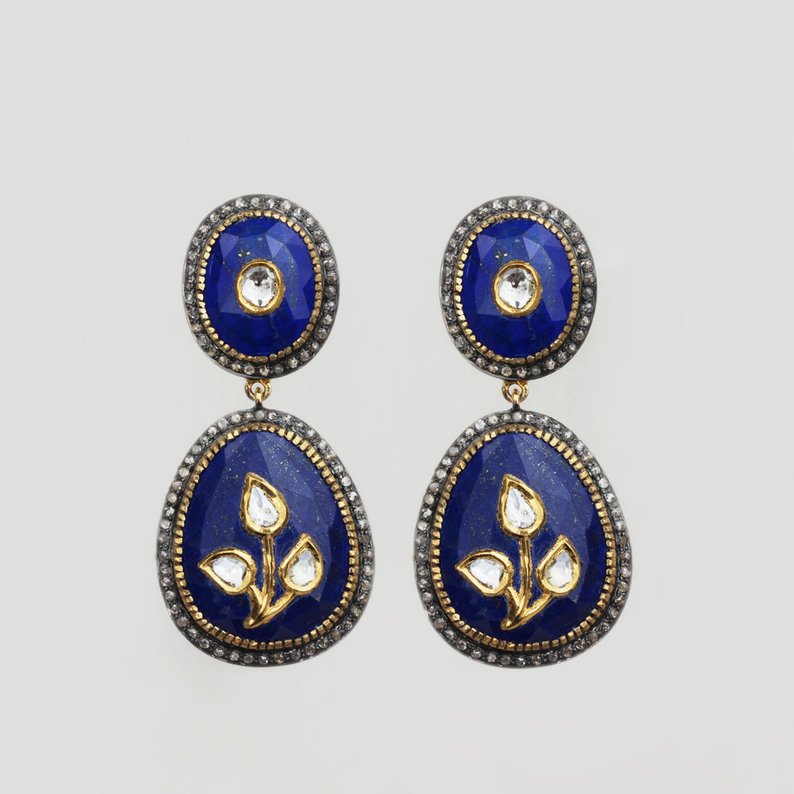
Lapis Lazuli is a relatively affordable stone and you can find rough stones at very affordable prices.
However, rough lapis doesn’t have the glossy look that we’ve come to associate with lapis lazuli. Once lapis has been worked on, the price starts to rise.
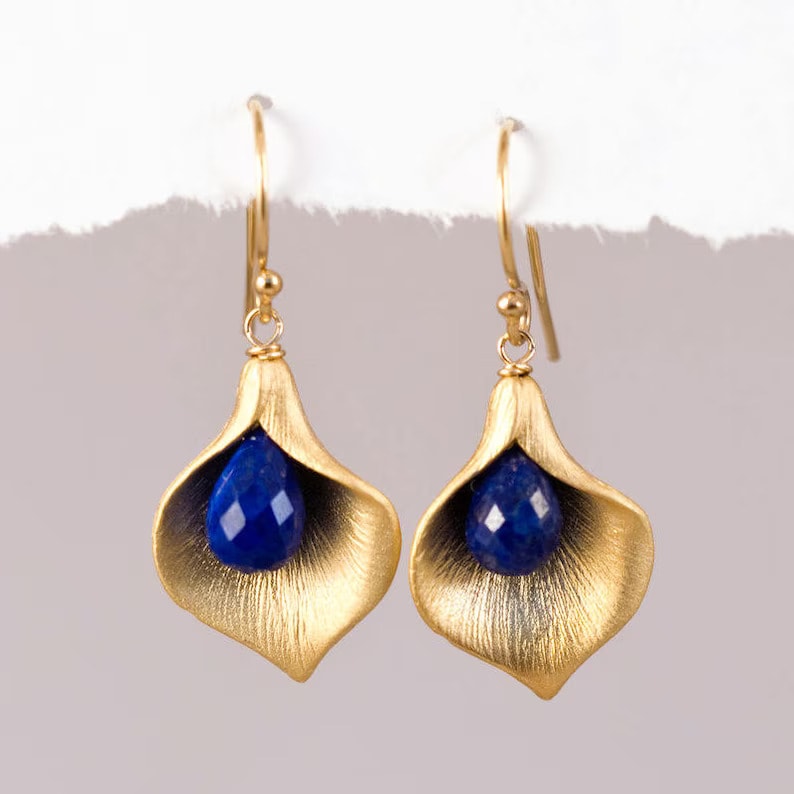
The setting of lapis lazuli jewelry also adds to the overall cost of the stone. When set in gold or platinum and paired with other gemstones like diamonds or emeralds, lapis lazuli jewelry can cost thousands of dollars. The benefit of this is that there’s lapis lazuli pieces to suit everyone’s budget.
Choose stainless steel or silver for more affordable pieces. But if you have the extra cash, then you can’t beat the beauty of lapis in gorgeous gold settings.
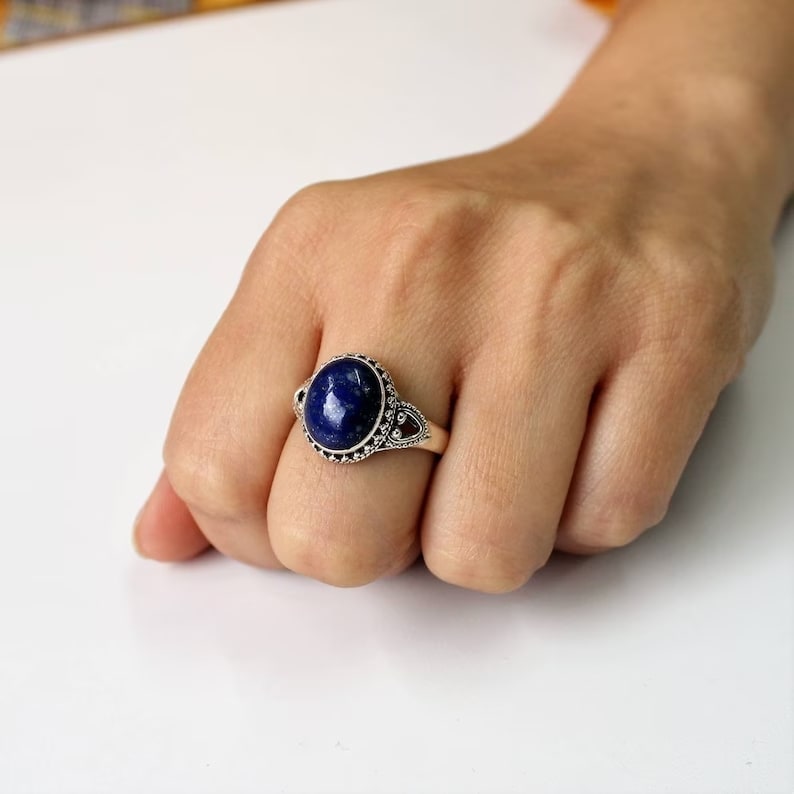
Like many other gemstones, the 4Cs, cut, color, clarity and carat weight, are always good to be aware of when buying lapis too. Look for vivid blue lapis, with minimal impurities, a neat cut, and of a good size.
The origin of the stone can also add to the piece’s overall value.
Persian and Afghan stones are more valuable (due to their medium and uniform dark blue color and the absence of pyrite and calcite impurities) as compared to lapis lazuli from Russia and Serbia. The least valuable lapis comes from Chile as these stones often contain a large calcite matrix.
History of Lapis Lazuli
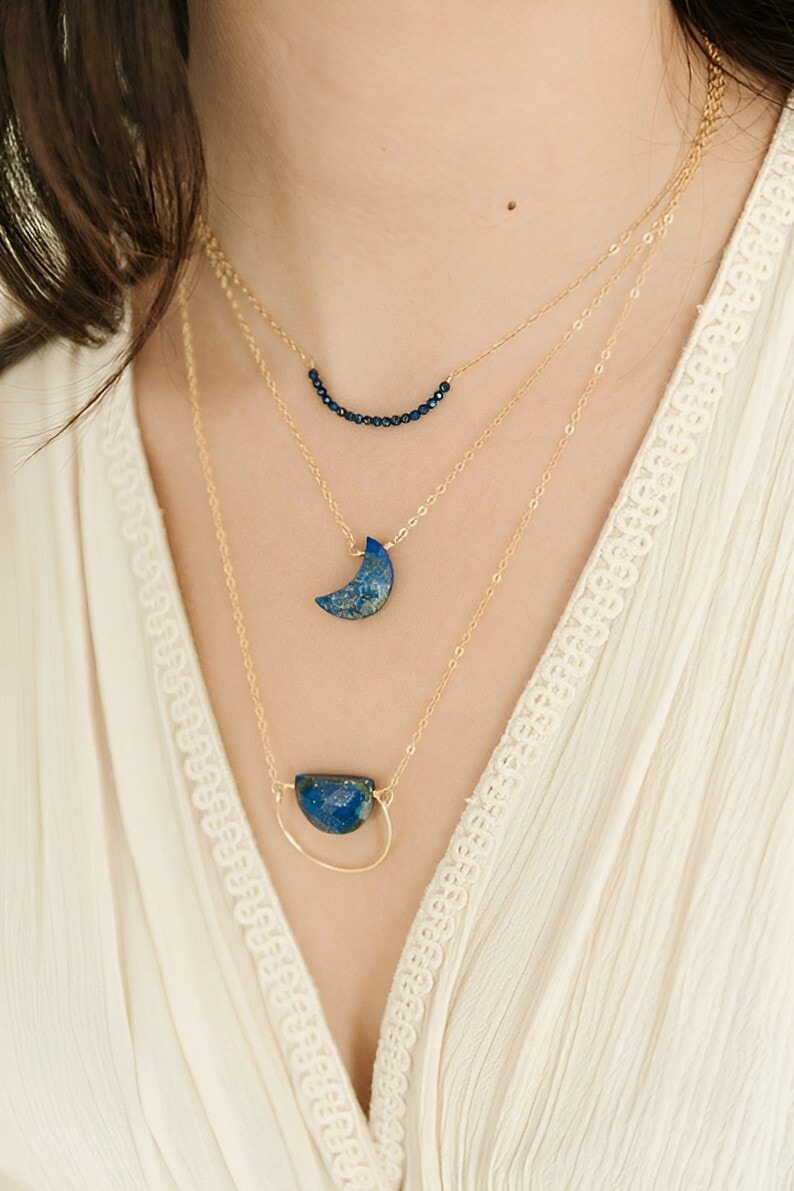
Lapis Lazuli holds a special place in human history and culture. It was highly valued by ancient civilizations for both its aesthetic beauty and spiritual significance. The earliest known uses of Lapis Lazuli date back to ancient Mesopotamia, where it was used to create jewelry, beads, and decorative items. It was also ground into a powder to produce the intense blue pigment known as ultramarine, which was used in the artwork of the Renaissance and other periods.
1. In Egypt and Sumeria
Lapis Lazuli was treasured by ancient Egyptians and was associated with royalty and divinity. It was used to craft amulets, jewelry, and even inlays for funerary masks. The ancient Sumerians also used Lapis Lazuli for jewelry and decorative purposes.
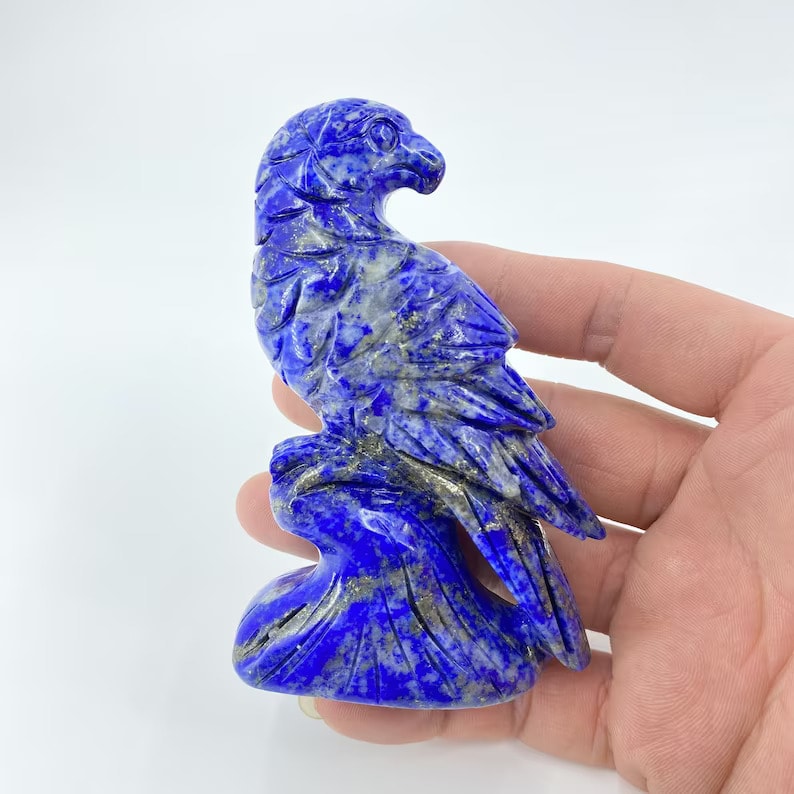
2. In Mesopotamia and Persia
In Mesopotamia, Lapis Lazuli was considered a symbol of power and prestige. It was often used in cylinder seals and other artifacts to represent authority and wealth. It was also used extensively in ancient Persia for jewelry, carved objects, and architectural embellishments.
3. Ancient Asia
Lapis Lazuli played a significant role in the history of ancient Asian cultures. It was traded along the Silk Road and was highly valued by civilizations like the Indus Valley and Chinese dynasties. In China, Lapis Lazuli was associated with wisdom and spiritual insight.
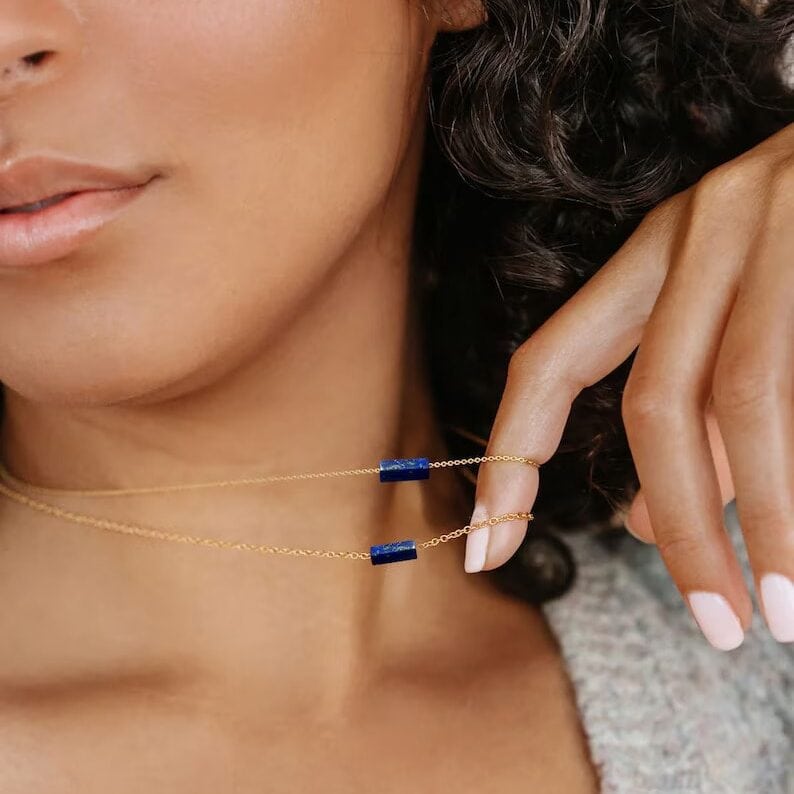
4. Modern Usage
In modern times, Lapis Lazuli is still admired for its unique beauty. It’s used in jewelry, carvings, and ornamental objects. Its historical significance and deep blue color make it a favorite among collectors and those who appreciate its connection to ancient civilizations.
Symbolism of Lapis Lazuli
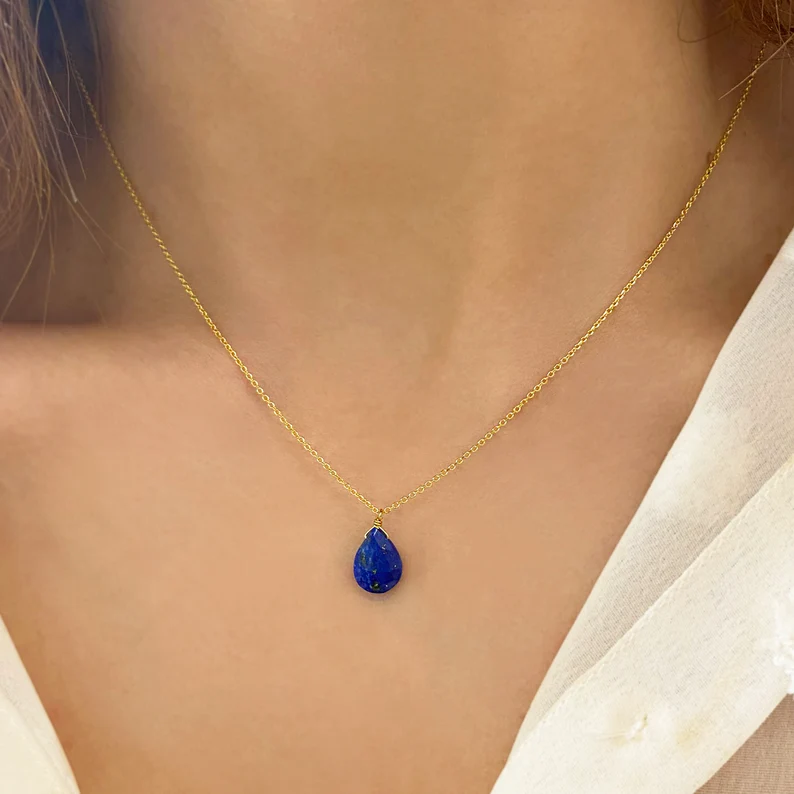
Lapis Lazuli carries significant meaning and symbolism that’s evolved over centuries and across cultures. Here are some of the key meanings and symbols associated with this beautiful gemstone:
1. Spirituality and Inner Wisdom
Lapis Lazuli is often associated with spiritual insight, inner wisdom, and enlightenment. Its deep blue color is reminiscent of the night sky, symbolizing the vastness of the universe and the mysteries of life. It has been used by various cultures as a stone that encourages self-awareness, self-expression, and a deeper connection to one’s inner truths.
2. Royalty and Power
Throughout history, Lapis Lazuli has been linked to royalty and power. Its rich blue color was associated with the heavens and divine rulership. In ancient civilizations, wearing Lapis Lazuli jewelry was a symbol of prestige, authority, and social status. It was often reserved for rulers and high-ranking individuals.
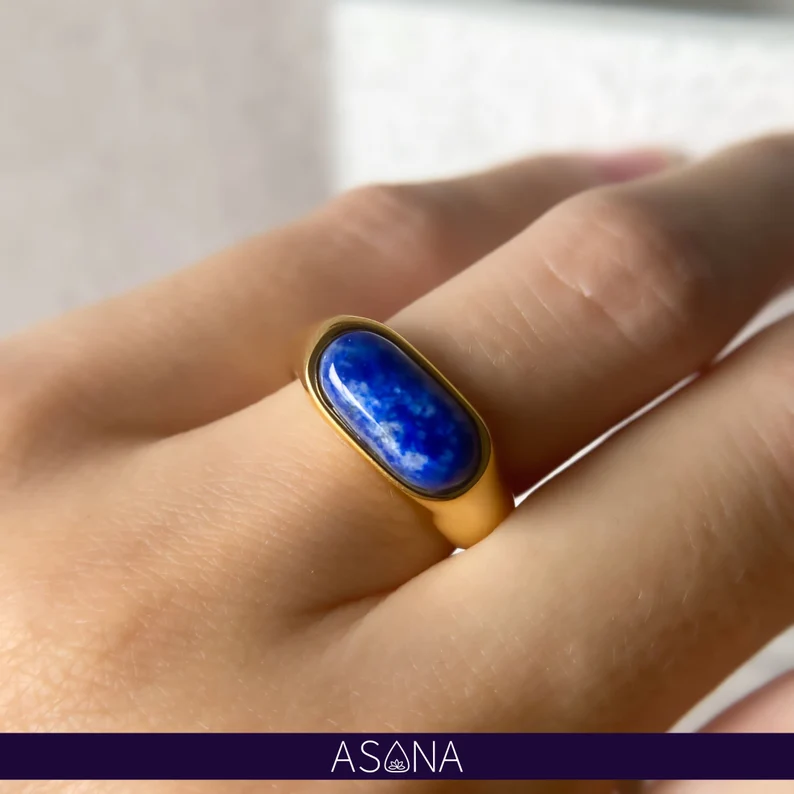
3. Protection and Healing
Lapis Lazuli has been regarded as a stone of protection against negative energies and psychic attacks. Its energy is believed to shield the wearer from harm and promote emotional balance. In holistic healing practices, Lapis Lazuli is thought to encourage inner peace, relieve stress, and promote a sense of calmness.
4. Communication and Expression
The stone’s association with the throat chakra, the energy center related to communication and self-expression, is another aspect of its symbolism. Lapis Lazuli is believed to enhance communication skills, helping individuals express themselves with clarity and confidence. It’s considered a stone that facilitates honest and open communication.
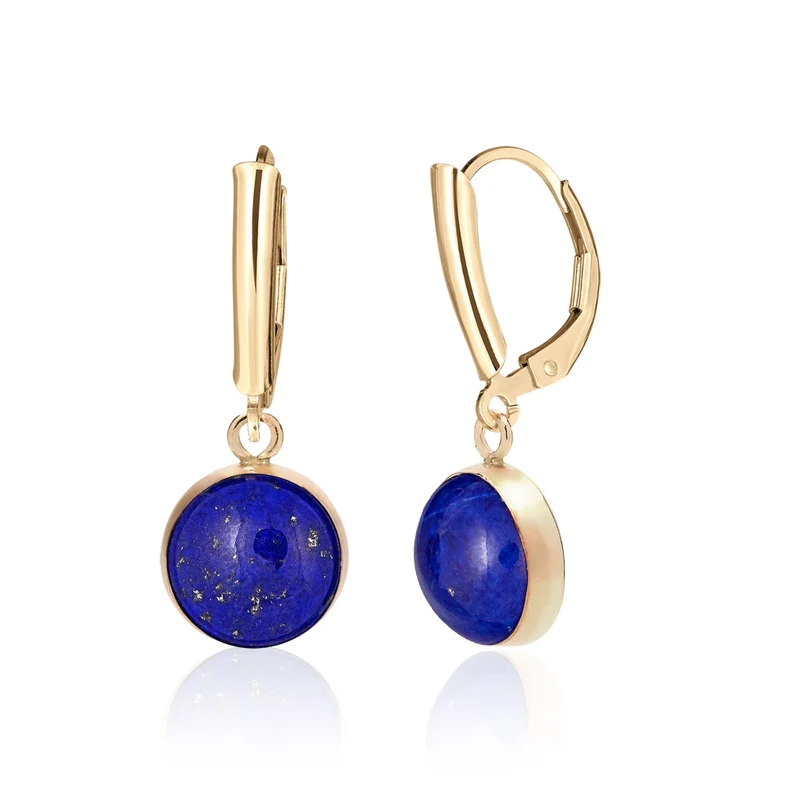
5. Connection to Ancient Wisdom
Due to its historical significance and use by ancient civilizations, Lapis Lazuli is often seen as a link to ancient wisdom and knowledge. It’s thought to carry the energy of these cultures and can serve as a reminder of the timeless truths and insights that have been passed down through the ages.
6. Positive Energy and Creativity
Lapis Lazuli is associated with positive energies, creativity, and inspiration. It’s believed to stimulate the mind, encourage creative thinking, and enhance problem-solving abilities. This makes it a favorite among artists, writers, and those seeking to tap into their creative potential.
Lapis Lazuli Care and Maintenance
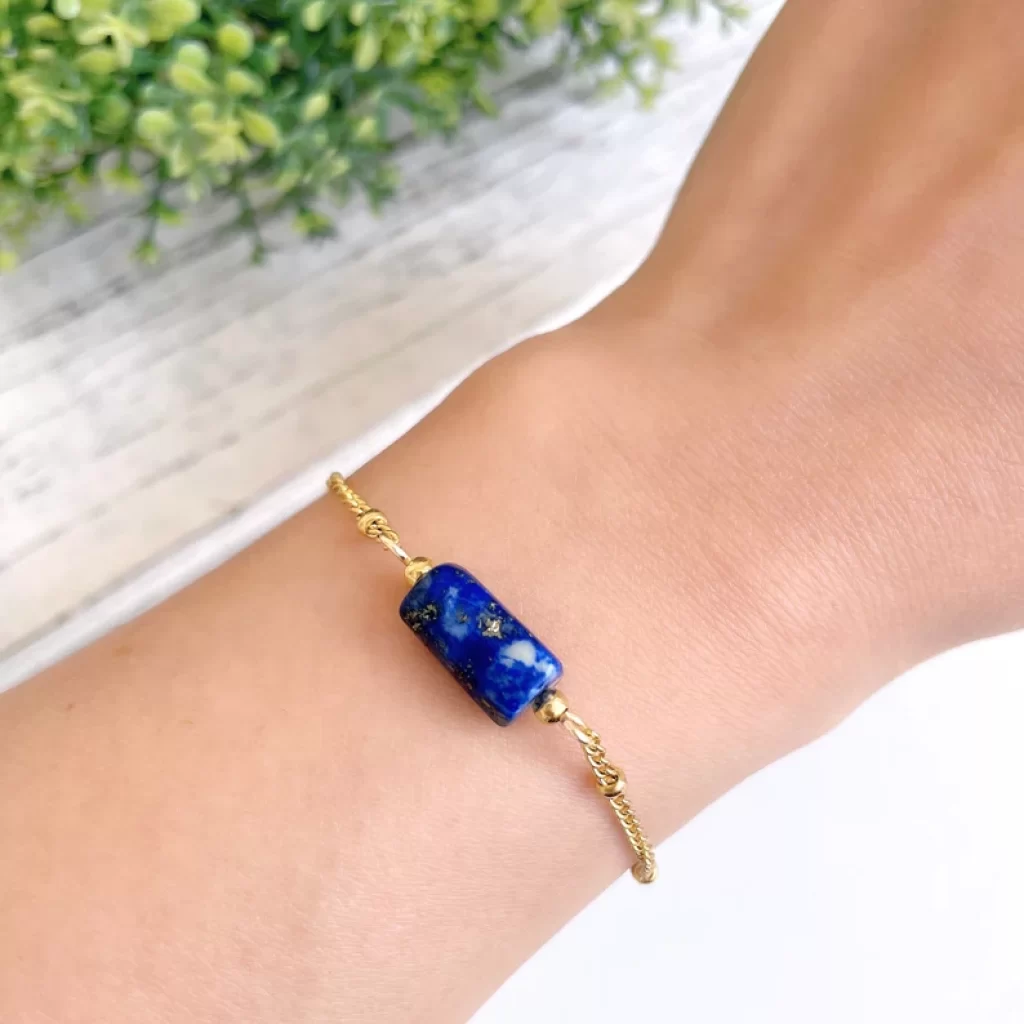
To ensure the longevity and beauty of your Lapis Lazuli jewelry, it requires specific care. As a relatively softer gemstone, it’s best to avoid wearing it during activities that could lead to scratching or damage.
Shield it from household chemicals and perfumes, which may harm its surface. When not in use, store it separately in a soft pouch or lined box to prevent scratches and avoid humid environments. For cleaning, gently use diluted mild soap and warm water, followed by a soft cloth.
Avoid ultrasonic or steam cleaners, as they could harm the stone. Regularly inspect for damage and loose settings, seeking professional repair if needed. Rotate its wear with other jewelry to minimize wear and tear. With proper care, you can enjoy your Lapis Lazuli jewelry’s enduring beauty and significance for years to come.
Where to Buy Lapis Lazuli
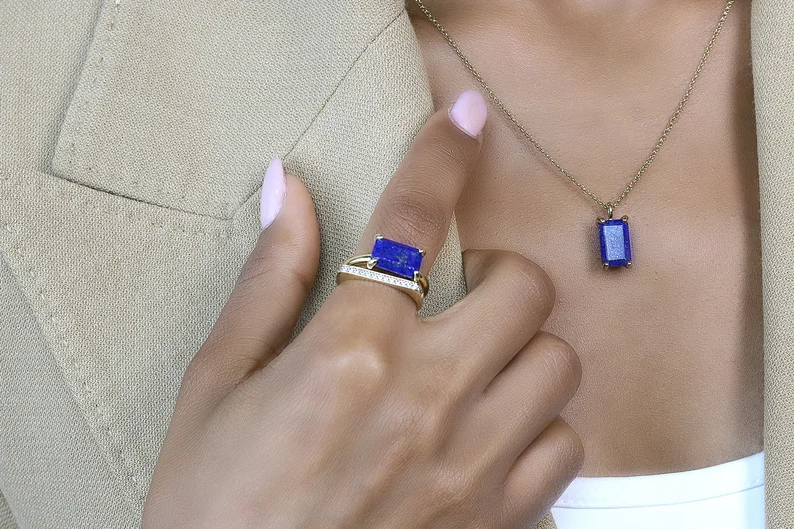
If you’re looking to buy your lapis lazuli online, we recommend starting your search on the following platforms:
1. Etsy
For unique, handmade, and artisan styles, Etsy has a lot to offer. You can find multiple independent boutiques here offering a wide range of lapis lazuli jewelry.
You’ll even find antique and estate pieces that cost thousands of dollars as well as modern, stylish pieces at affordable prices.
Each Etsy shop has its own policies so it might take some time to review all their details ahead of making a purchase, but that’s usually time well spent. Browse Etsy here.
2. Amazon
Amazon brings together different jewelry vendors who offer their products here. Again, there’s a wide range of lapis lazuli jewelry, so there’s bound to be something for everyone.
Use the site’s extensive rating and review sections to gauge the quality of each product. Search Amazon here.
Wrapping Up
Lapis Lazuli jewelry is a timeless treasure that embodies a rich history and meaningful symbolism. Its deep blue hue, specks of gold, and spiritual significance make it a captivating choice for those seeking unique and meaningful pieces.
While requiring gentle care due to its softer nature, the beauty and depth it adds to jewelry creations are unmatched. Whether worn as a personal talisman or a cherished gift, Lapis Lazuli jewelry resonates with both aesthetic appeal and profound significance, making it a gemstone of enduring allure.


